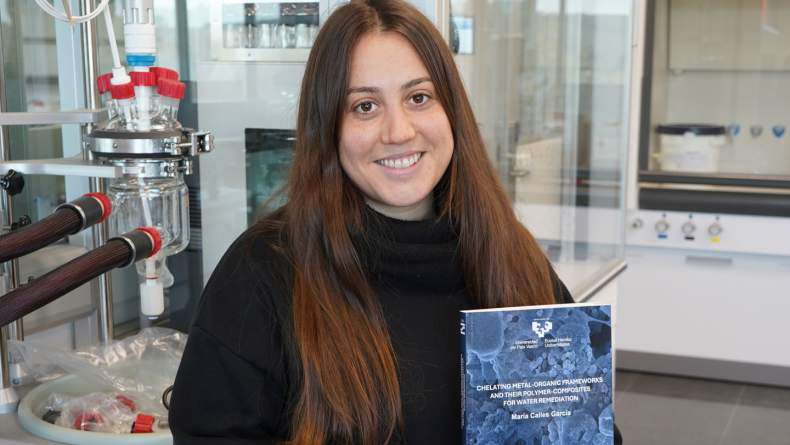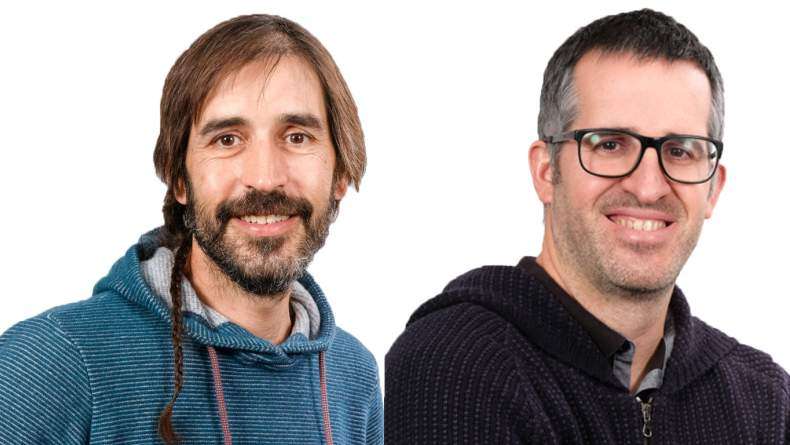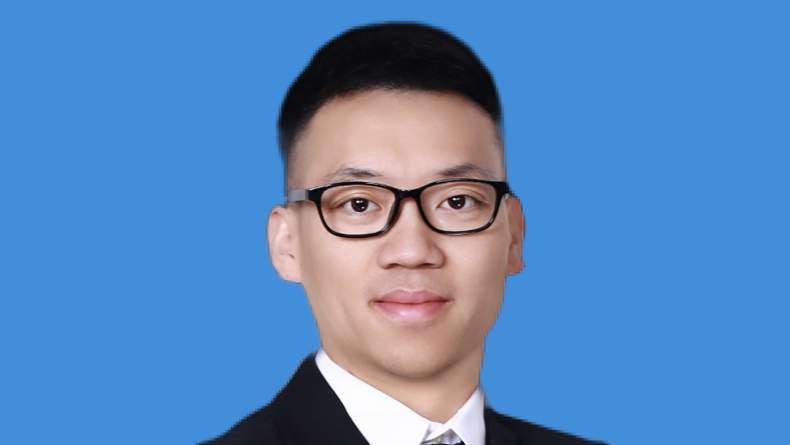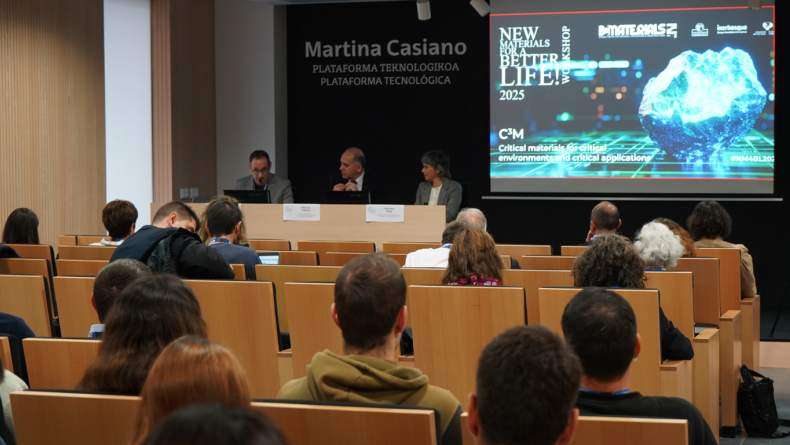PhD Results #4

AINARA VALVERDE
(BCMATERIALS)
MOF MATERIALS FOR POLLUTANT REMOVAL IN AQUATIC ENVIROMENTS
The accumulation of heavy metals in aquatic environments is a major concern in our society, since these ions can cause serious health and environmental hazards. Due to this concern, the significance of developing technology for removing heavy metals has been increased. At present, many methods have been developed to remove heavy metals from water, and among them, the adsorption method is a practical and economic method compared to other techniques because of its comparatively low cost, high efficiency, simplicity of operation and lower secondary pollution. Metal organic frameworks (MOFs) are composed of organic ligands and metal ions or clusters with infinite network, which are new type of microporous and mesoporous materials. MOFs have advantages of high porosity, diversity in structure, large specific surface area, relatively easy modification and chemical and thermal stability, which makes them very suitable for heavy metal removal in aquatic environments. In our work, a post-synthetic functionalization has been carried out in the MOF808, anchoring to the cluster different natural amino acids that provide the MOF different affinities to metals depending if they are hard, soft or borderline acids. The functionalization degree has been quantified thanks to H1-NMR analysis, and metal adsorption studies have been carried out with 7 different metals.
SHEILA MAIZ
(BCMATERIALS)
Injectable hydrogels based on chitosan for tissue engineering applications
Tissue engineering is an interdisciplinary field that combines the science of materials and biosciences towards the development of new technologies in order to restore, maintain and improve partially or totally cellular tissues. For this, this technology develops scaffolds, three-dimensional architectures consisting of structural materials (polymers) and biological materials (cells), which mimic the extracellular matrix. Polymeric hydrogels are suitable biomaterials to imitate those aspects and due to this, the scientific interest in developing this type of synthetic hydrogels in situ has increased. In situ hydrogels are hydrogels capable of gelling only in the physiological conditions to can be injected and act in a specific place. This exposition focuses mainly on the study of different chitosan hydrogels: chemical hydrogels, cross-linked with genipin, and, in situ hydrogels based on the reversible physical interaction between chitosan and β-glycerol phosphate. In addition, both types of hydrogels have been combined to form a mixed gel composed of both systems. Properties, such as porosity, swelling, degradation, rheological properties of gels obtained as well as the reversibility of gelation and bioprintability have been studied.
Related news
María Calles, New Doctor of BCMaterials
We would like to congratulate María Calles García for obtaining her PhDs in Materials Science and Technology from the UPV/EHU. On December 4 made a brilliant defense of her thesis titled ‘Chelating…Invited Talk with Barcelona Microelectronics Institute’s researchers (December 3)
On December 3 at 12:00 PM, in the Martina Casiano Auditorium in Leioa, BCMaterials will host senior researchers Antón Guimerà and Xavier Illa from the Barcelona Microelectronics Institute (IMB-CNM,…Invited Talk by Liu Yao on Lithium-Metal Batteries (December 2)
Next Monday, December 2, Liu Yao, professor at the Shanghai Institute of Applied Physics, will give an invited lecture at BCMaterials entitled ‘Li-Metal Batteries: From Liquid to Solid-State’. The…Success of BCMaterials’ Annual Workshop on Critical Materials
The 2025 edition of BCMaterials’ annual workshop gathered nearly one hundred participants on November 19 in Leioa to review the latest advances and discuss critical materials, their applications, and…



